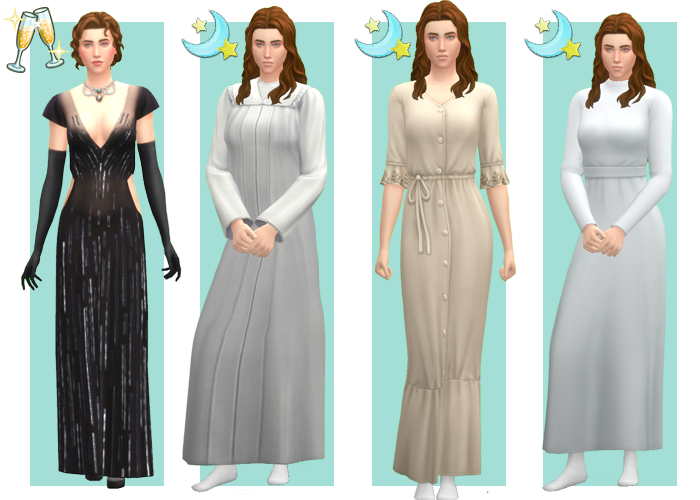No CC Decades Outfits 2.0
In 2021 the simmer ashubii started a thread by this name, which served as an inspiration to several of us. Now like many other threads the screenshots did not get transferred over, nor did it end up in the Sims 4 community but in the Sims Franchise Discussion instead. Since the OP does not seem to be active any longer, I have taken it on myself to salvage the post and its contents, as well as making it easy for more of us to contribute and build on the idea.
The original (with links instead of pictures) can be found here.
All credit for the idea and first post should go to ashubii , I'm just trying to make sure nothing gets lost.
Finally a little tip that has helped me a great deal. It does involve a mod (MCCC), but I figured it can't hurt anyway:
- In CAS, create sims that are dressed in clothes you want to see on your NPCs. You need infant, toddler, child, teen/YA/adult and elders of both genders represented (MCCC can't distinguish between teen, YA or adult fashion, so all those will be in one category). Make sure to include accessories, as they will be included in the outfit.
- Move your sims into a house and load it.
- Click each sim, choose the MCCC-meny, choose dresser, outfit commands and finally save outfit.
- Do this for each and every outfit you want your NPC sims to wear. (Yes, it's tedious, but so is changing everyone manually too). The more outfits you save, the more variation in the game.
- When finished make sure there is a computer on the lot. Click the computer and the MCCC menu.
- Choose dresser menu - Only Use Saved Outfits (means all new NPC will be generated in your chosen outfits) - Ages to Run on Age-Up (means sims will wear your chosen outfits when aging up. At minimum choose infant, toddler, child, teen and YA. Adults and elders will just keep their clothes in that case.)
Rinse and repeat every decade or so.
